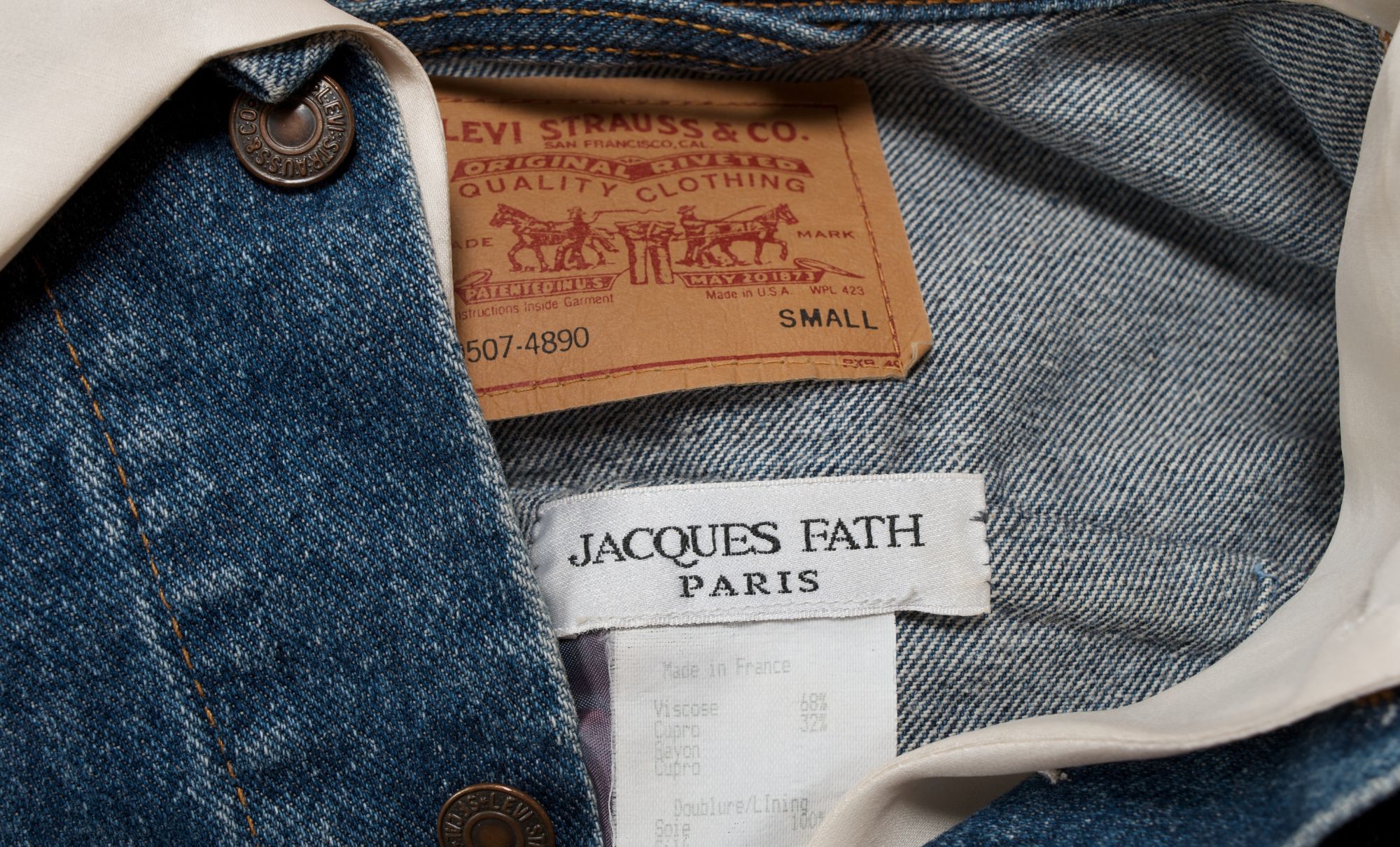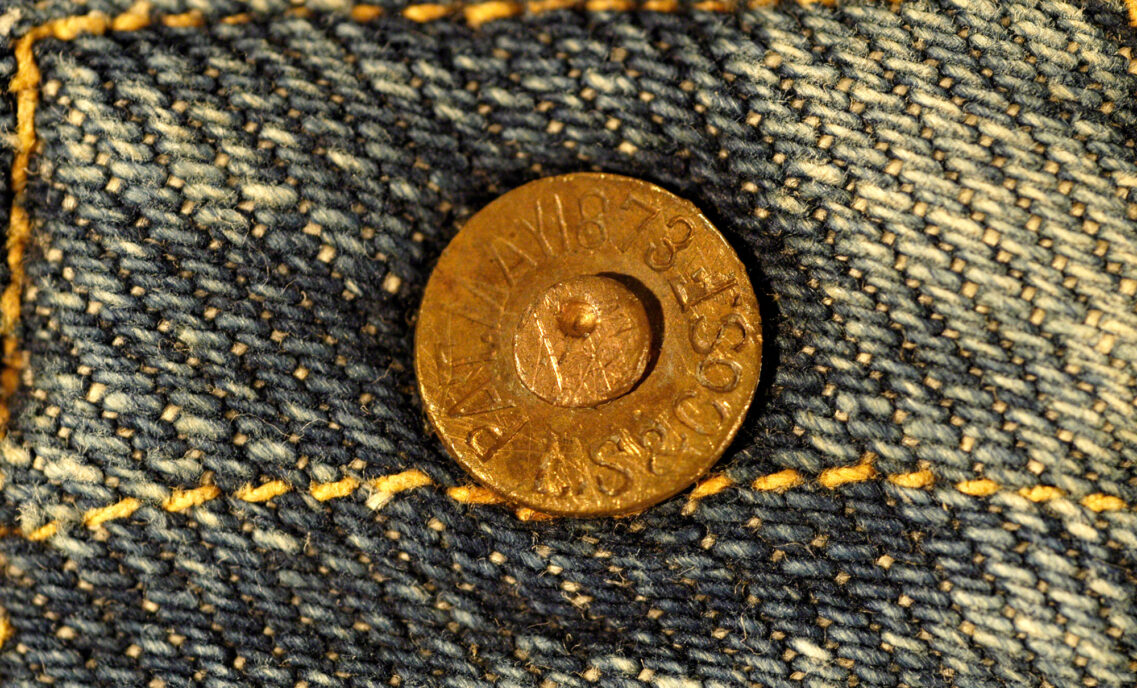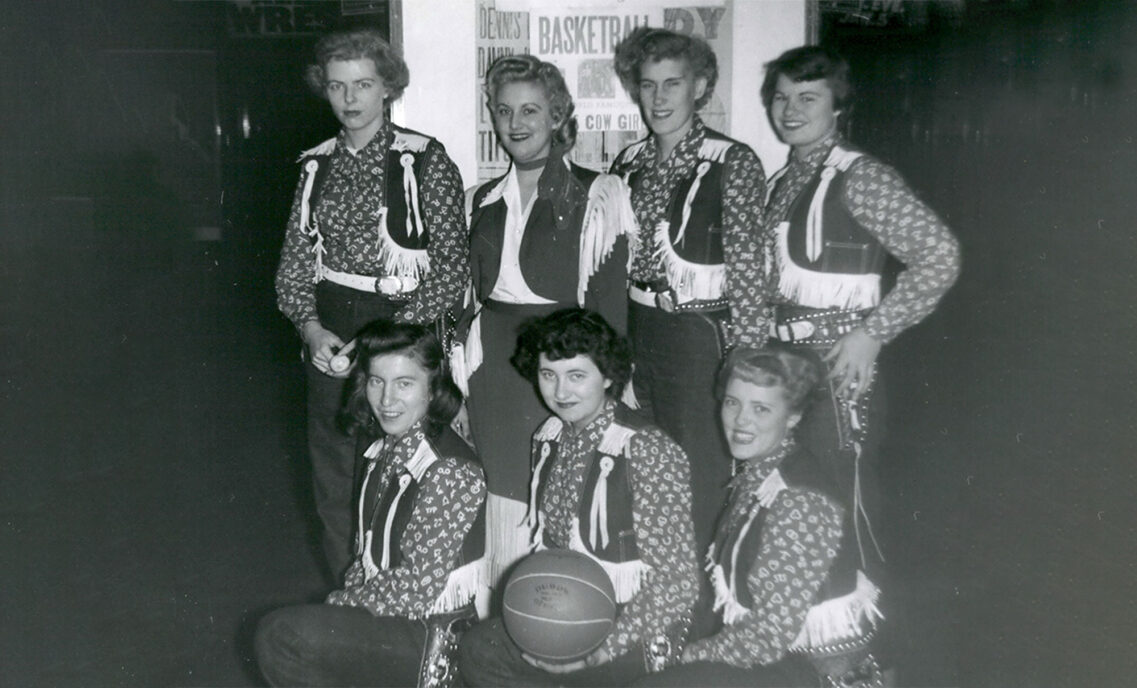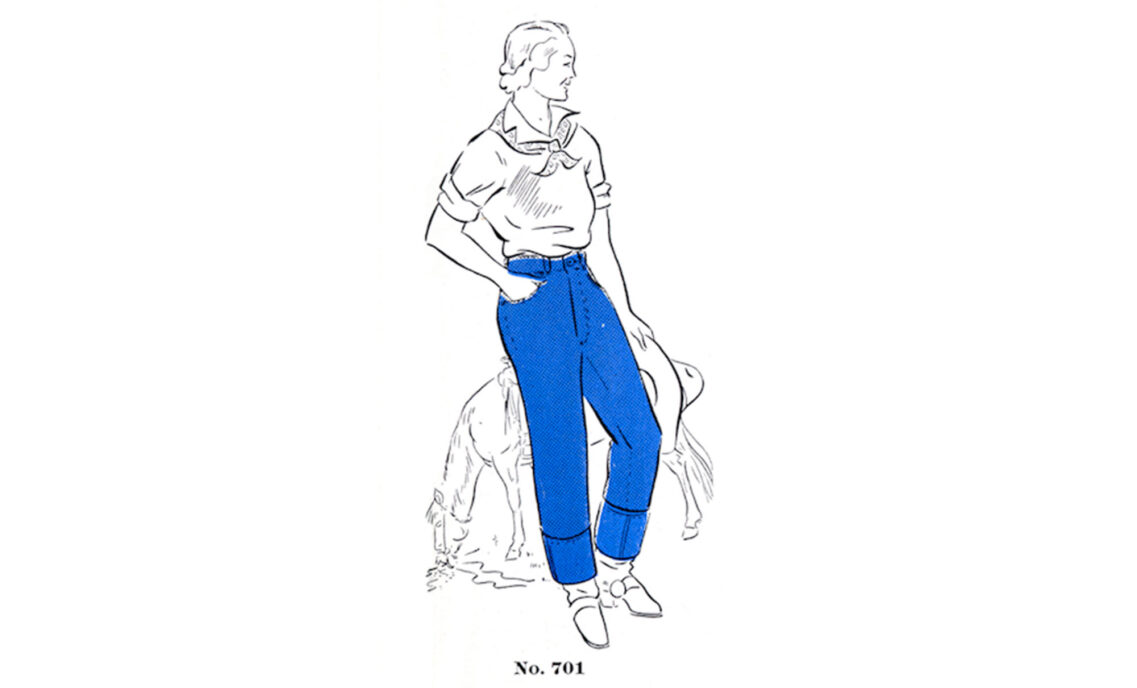Nowadays, Levi’s® products are well known around the world as style sensations. But back in the 1940s, our jeans were still associated with western workwear, not Parisian couture. That’s why so few could have predicted that America’s finest overalls — worn by women, to boot — would be the star on a runway in the world’s fashion capital and influence French fashion for decades to come.
From wartime factories to couture runways
World War II ushered in a host of changes for women and fashion. Working in factories to support wartime production efforts, women would wear overalls or denim blue jeans on the job, with the tough clothing protecting them from welding sparks or riveting work. It was a natural evolution from our denim’s beginnings as workwear and cowboy garb.
But blue-collar workwear and bespoke clothing were still worlds apart. In couture culture, custom evening gowns in chiffon still dominated the runway. And it was still uncommon for women to wear trousers outside of the factory — in fact, Marlene Dietrich was detained at a train station in Paris in 1933 for violating a ban on women wearing trousers.
That all changed in 1947.
In the devastation following World War II, Adolph Schuman, San Francisco Manufacturers’ and Wholesalers’ Association President, conceived of an idea to hold an all-American fashion show in Paris that combined French design with American manufacturing. Dubbed the Fashion Flight, Schuman believed the concept would benefit both sides. American manufacturers would introduce Parisian fashion houses to California’s “sports and play clothes and day-long livable types” — in other words, Levi’s® denim and other casual clothing. In return, American manufacturers could buy Parisian “accessories [and] ornaments” and be inspired by ideas “for future trends.”
With their economy still in recovery, Henri Beaujard, French commercial attaché, saw the plan as a “breath of fresh air” that could stimulate exports. He offered the full support of the French Ministry of National Economy.
The Americans chartered two Matson Skymaster planes that took off from San Francisco on October 10, 1947, bound for Paris. The 63 passengers included designers and manufacturers like Levi Strauss & Co., movie star Joan Leslie, journalists and two Levi’s® models — 19-year-old identical twins Patricia (Pat) and Priscilla Emery.
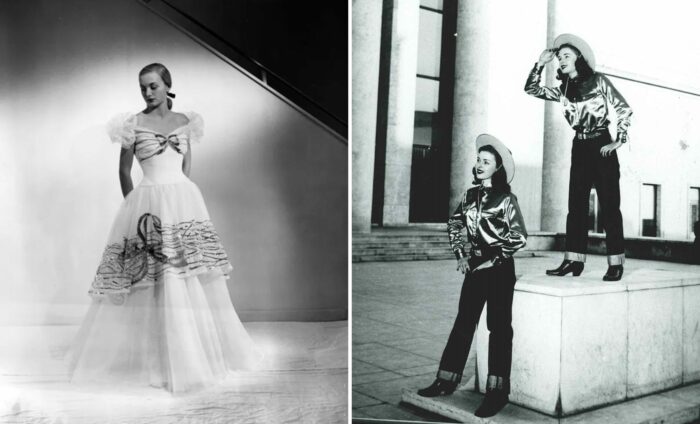
Left: A debutante’s dream gown modeled by Emma Domb. Right: Priscilla and Patricia Emery modeling Lady Levi’s® Lot 701® jeans. Credit: Aenigma Images
‘Perhaps this will influence French styles’
The fashion show was staged in the Grand Ballroom of the upscale Georges V Hotel. The runway was decked out with a movie-production battery of blinding lights and 1,600 pounds of California chrysanthemums.
Guests ranged from U.S. and European fashion writers to Parisian couturiers and textile manufacturers. Models donned bathing suits, sports clothes and dresses, including a white wedding gown worn by Joan Leslie.
The Paris runway showstoppers? The Emery twins modeling cuffed Lady Levi’s® Lot 701® button-fly copper-riveted denim jeans and Levi Strauss satin rodeo shirts.
“Eyes pop when, with a blare of trumpets, [Pat and Priscilla Emery] prance through the crowd in cowboy fashions — [Levi’s®], gold shirts and 10-gallon hats by Levi Strauss,” described Aenigma Images in a 2017 story recapping the show.
In the end, the all-American debut fashion show in Paris was a whopping success. San Francisco News reported, “3,000 gasp at dazzling display of local styles.” Other news noted that the Californians “put on a fashion show here last night with all the trapping of Hollywood, and the French couturieres [sic] — those who were able to get in — went away bedazzled.”
“We were amazed by the show, by the clothes and by the music,” said Philippe d’Asten of the Jacques Fath Dress House. “Perhaps this will influence French styles.”
Considering how many modern French styles have been influenced by Levi’s® today — like a 1994 Jacques Fath gown created from a Levi’s® trucker jacket and the Levi’s® x Vetements 2017 collaboration — d’Asten’s summary of the fashion show was prophetic.



